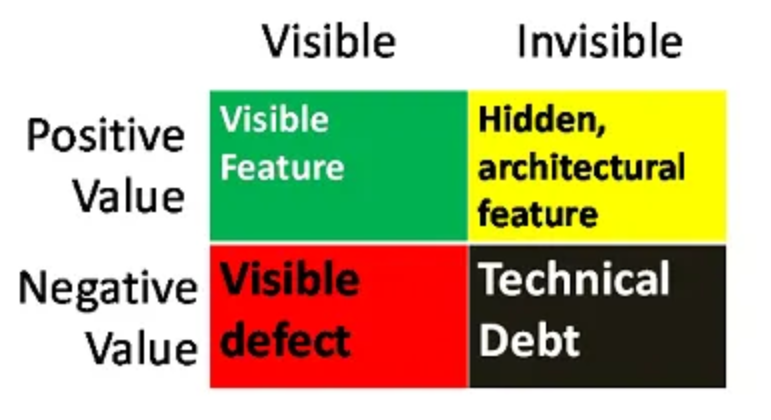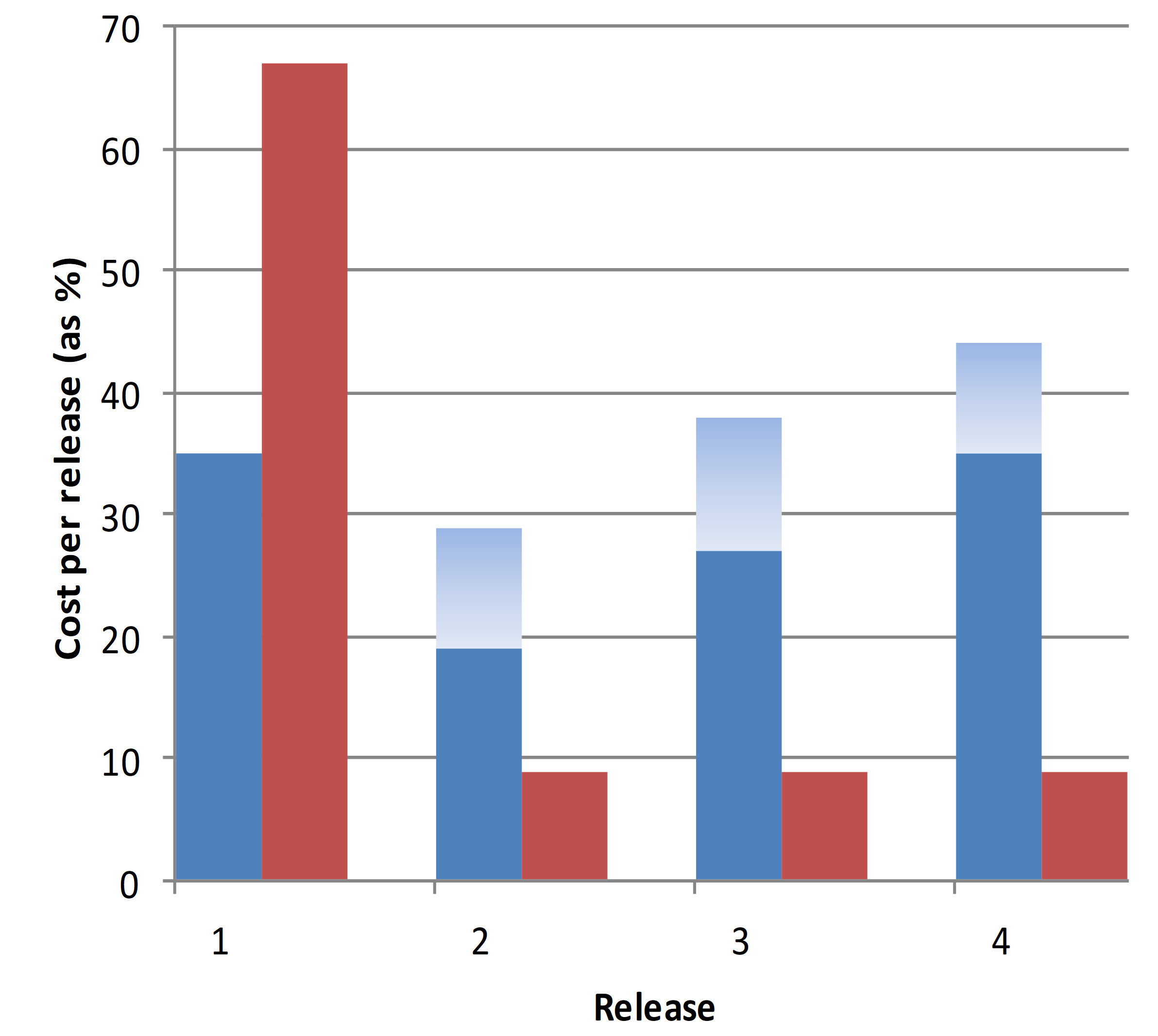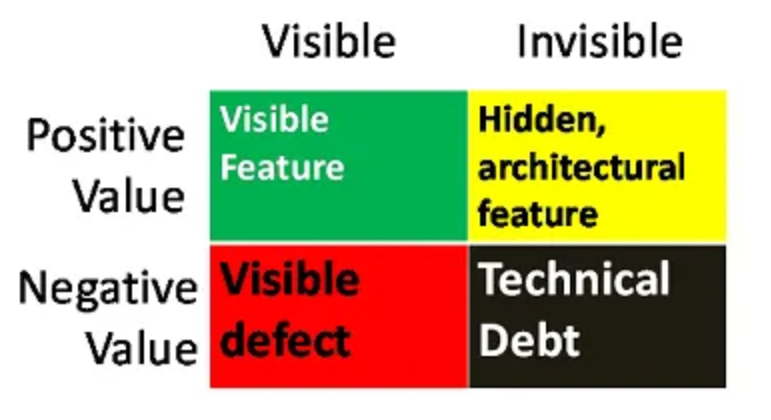Technical debt is a widely known software program engineering concern that refers back to the tradeoff between the short-term advantages of fast supply and the long-term worth of creating a software program system that’s straightforward to evolve, modify, restore, and maintain. Technical debt in a code base contains these structural parts that, if not reworked, contribute to accumulation of elevated operation and upkeep prices. On this weblog put up, we look at the evolution of the sector of technical debt and determine open analysis questions that may drive future developments.
Researchers and organizations in authorities and trade acknowledge that if you don’t actively handle technical debt, it is going to handle you. The U.S. Division of Protection has affirmed the significance of technical debt by particularly citing it within the Nationwide Protection Authorization Act of 2022. Part 836 of this act authorizes the U.S. secretary of protection to provoke a examine of technical debt in software-intensive methods that features analyses and actionable, particular steering and proposals for statutory or regulatory modifications.
Our work in technical debt relies on the precept that for those who don’t make one thing seen, you received’t handle it. Avoiding the damaging outcomes related to accumulating technical debt requires organizations to embrace technical debt administration as a core software program engineering apply. Simply utilizing the phrase “technical debt” isn’t an engineering apply. Now we have lengthy really helpful that technical debt be added to an points backlog to investigate how and the place structure necessities is perhaps failing and that it’s managed as an integral a part of product-development actions.
In Search of a Metric for Technical Debt
Though there are a number of metrics in use as we speak that purpose to quantify technical debt from completely different views—and there’s no one-size-fits-all metric—we’re gratified by the affect that our work on technical debt metrics has had on the sector of software program engineering. The Worldwide Convention on Software program Structure (ICSA) just lately awarded us with the Most Influential Paper Award for a paper we wrote in 2012, In Search of a Metric for Architectural Technical Debt, together with our colleagues Philippe Kruchten and Marco Gonzalez-Rojas of {the electrical} and pc engineering division on the College of British Columbia. Within the paper, we detailed how technical debt is rooted in software program structure and described how an architecture-focused and measurement-based strategy to creating a metric primarily based on propagation price helps strategically handle technical debt. We demonstrated this strategy by making use of it to a system-development effort that was then underway.
The technical debt idea has confirmed to be a helpful assemble for speaking the tradeoff between fast supply and long-term system sustainability. Its affect is clear in Agile at scale and DevSecOps practices, in addition to in authorities acquisition practices, such because the Adaptive Acquisition Framework and the Sensible Software program and Methods Measurement Steady Iterative Improvement (Agile) Measurement Framework.
Sadly, our use of the time period architectural technical debt within the title of our paper has been taken by some to indicate that there’s a taxonomy of varied varieties of technical debt, of which architectural technical debt is only one. We subsequently hear and skim of documentation technical debt, safety technical debt, and so forth. It is very important make clear that this interpretation was not our intention. Our view is that technical debt is rooted in architecture- and design-related points and the rework that these points trigger. When not managed, technical debt will increase the probability of safety points and defects that additional improve the accumulating penalties.
Technical Debt is Rooted in Structure Rework
The essence of our strategy—each after we wrote the paper and now—is that this: The worth of the delivered options and the impression of price that will probably be incurred have to be taken under consideration in decision-making associated to delivering a product. Making technical debt seen supplies the mandatory info for making knowledgeable choices about managing the potential impression of rework over time. Within the curiosity of creating debt seen, our paper offered a dependency-analysis framework for measuring structure rework as a proxy for technical debt.
Our colleague and co-author Philippe Kruchten posed a helpful means of characterizing parts in a software-development mission all through the event lifecycle. These parts are depicted in Determine 1.

Constructive-value features are proven on the highest row of Determine 1. The inexperienced represents the options and performance that the mission should ship for its stakeholders, which is seen on the discharge schedule and drives the group, the gross sales, the success, and the shopper satisfaction. The yellow represents the architectural infrastructure and design constructs which can be important for the longevity, construction, and habits of the system and for reaching its meant high quality attributes. Options are seen to the consumer and the structure is invisible to the world exterior of the event workforce, although each add constructive worth.
Equally, now we have the negative-value features proven within the backside row of Determine 1. The pink represents defects which can be seen to the consumer and have to be managed as shortly as doable to keep away from jeopardizing the system. The black represents technical debt that is a component invisible to the skin world ensuing from not getting the complete structure necessities proper. Technical debt accumulates because the product is constructed and key choices are deferred or poor work is finished.
The dependency framework we described in that paper takes under consideration how structure permits performance and the way builders can ship performance whereas additionally attending to the structure within the brief time period and the long run. Within the paper, we in contrast two paths, proven in Determine 2.

Determine 2: Comparability of Improvement Paths
We consult with Path 1, proven in blue in Determine 2, because the ship quickly path. It begins by delivering worth however more and more incurs rework (proven within the lighter shade of blue). We name Path 2, proven in pink, the architecture-savvy or scale back rework and allow compatibility path. This path initially incurs a better price, however the price of the rework is extra constant as the mandatory structure is in place to assist subsequent iterations.
The purpose of making a path comparability is to make the tradeoffs seen and specific. Path 1 represents the case of when the system is new and its enterprise worth is being explored and found. In such circumstances, it’s paramount to ship some performance and to check it within the area. As the usage of the system proves precious, the system begins to develop. Within the instance we describe within the paper, following the preliminary technique created uncontrolled implementation prices, requiring a major re-architecting effort, which was suboptimal for the long-term sustainment of the system. Performing such evaluation on potential rework because the system grows can allow well timed choices about when to start out re-architecting the system or when to pay again the curiosity on the borrowed time of the sooner design choices. Our strategy supplied concerns on the structure degree for making rework specific at every launch.
Our paper additionally demonstrated how software program architects can make the most of a change-propagation metric to calculate and justify the price of taking over technical debt. The quantification of rework isn’t trivial, nevertheless, particularly in terms of structure. Whereas nobody metric alone may also help builders optimize improvement price over time, structural structure evaluation and associated practices present the angle wanted to make the price of implementing the chosen choices specific.
Observe-Up Analysis
Our paper influenced quite a few analysis strategies and software program instruments within the 10 years since its publication, a lot of which have been validated in industrial case research with software-development corporations. This sort of follow-up work takes under consideration how structure permits performance and the way to obtain the stability between delivering performance and listening to structure in each the brief and long run. Examples of this work embody the next:
Future Work in Technical Debt
As time has handed, the physique of labor on understanding and managing technical debt and structure evolution has grown. On the SEI, we plan to research how empirical information and evaluation can be utilized to enhance iterative and incremental structure practices to handle technical debt.
A major quantity of analysis stays to create a technical debt quantification framework that isn’t solely repeatable and dependable, but in addition cognizant of domain-specific system challenges. We encourage researchers in each software program structure and metrics to extra deeply discover the connection between the construction and habits of structure patterns and the way metrics behave.
Sooner or later, it will likely be essential to obviously set up the validity of rising methodologies for quantifying technical debt. Not all present metrics for characterizing and quantifying technical debt are confirmed and never all are trivial to make use of. Whereas instruments are growing in sophistication, they have a tendency to deal with the issue of structure conformance reasonably than on the architectural features of quantifying rework.
Key open analysis questions within the area of technical debt analysis embody the next:
- How can we quantify rework utilizing completely different metrics to information how and when to refactor methods to resolve technical debt?
- How can we refactor methods, particularly accurately incorporating related metrics and gear assist?
- How can we relate rework quantification to operational practices?
- How can we seize the empirical information that’s coming from trade and authorities, analyze them, and use them to tell the right use of iterative, incremental structure practices and the way to enhance these practices together with managing technical debt.
We’d welcome the chance to work instantly with organizations thinking about collaborating with us on this work. Please contact us at data@sei.cmu.edu.
We additionally encourage researchers to contemplate engaged on searching for solutions to the questions above and to change into concerned within the annual TechDebt Convention. This convention connects main software program engineering researchers and practitioners to debate approaches for managing numerous varieties of technical debt, to share experiences and concepts, and to determine key challenges for trade and academia. It supplies a chance to vet concepts amongst distributors, trade builders, and researchers in technical debt administration.

